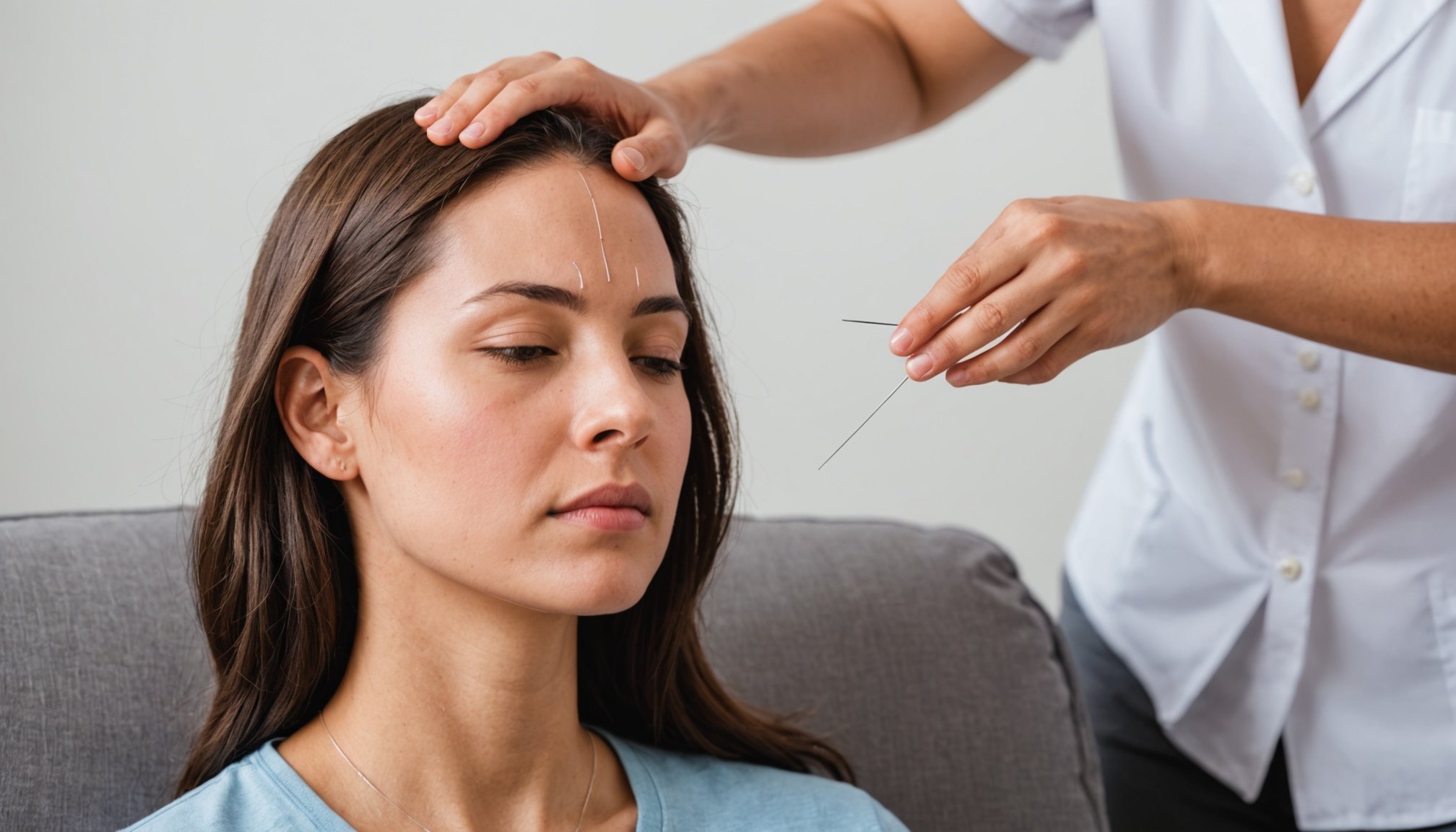Discovering the Effectiveness of Acupuncture for Relieving Migraine Headaches
Migraines are more than just headaches; they are complex neurological events that can disrupt every aspect of life. For those who suffer from these debilitating episodes, finding effective and sustainable relief is a constant quest. One approach that has gained significant attention and credibility is acupuncture. In this article, we will delve into the world of acupuncture, exploring its effectiveness, mechanisms, and practical applications in relieving migraine headaches.
Understanding Migraines and Their Impact
Migraines are not just severe headaches; they often come with a array of symptoms including nausea, sensitivity to light and sound, and visual disturbances. These symptoms can be so severe that they lead to depression, fatigue, and a significantly diminished quality of life.
Also read : Uncovering Innovations: Cutting-Edge Methods for Early Osteoporosis Detection
For many, traditional medications offer temporary relief but often come with side effects that can be as limiting as the migraine itself. This is where alternative and holistic approaches, such as acupuncture, come into play.
What is Acupuncture and How Does it Work?
Acupuncture is an ancient technique developed in China, based on the philosophy of Traditional Chinese Medicine (TCM). It involves the insertion of fine, sterile needles at precise locations on the body to stimulate the flow of energy, or “chi,” and to restore balance and harmony to the body.
Also to discover : Discover the Most Recent Advances in Prenatal Genetic Screening: What You Need to Know!
In the context of migraines, acupuncture is believed to work by several mechanisms:
- Stimulating Endorphins and Other Neurochemicals: Acupuncture can stimulate the brain to release natural painkillers such as endorphins and serotonin, which help to relieve pain and improve emotional well-being.
- Improving Blood Circulation: By increasing blood circulation, acupuncture brings oxygen and nutrients to the affected areas, facilitating healing and reducing pain.
- Addressing Underlying Imbalances: Acupuncture aims to treat the root causes of migraines, rather than just masking the symptoms. This holistic approach helps in preventing future attacks and improving overall well-being.
The Science Behind Acupuncture for Migraines
Numerous studies have investigated the efficacy of acupuncture in treating migraines. Here are some key findings:
Clinical Studies and Trials
- A 2018 review published on Cochrane.org found that acupuncture can reduce the frequency of migraine attacks and the number of headache days. The study suggested that at least six visits of acupuncture treatment may be necessary to see significant benefits.
- Randomized controlled trials have shown that acupuncture is more effective than sham acupuncture in reducing migraine frequency and severity. These studies highlight the potential of acupuncture as a complementary treatment for migraine prophylaxis.
Mechanisms and Outcomes
- Acupuncture has been shown to affect the nervous system, leading to the production of endorphins and other pain-relieving chemicals. This can result in significant pain reduction and improved quality of life for migraine patients.
Comparing Acupuncture with Other Therapies
To understand the unique benefits of acupuncture, it’s helpful to compare it with other therapies, such as dry needling.
Acupuncture vs. Dry Needling
| Characteristics | Acupuncture | Dry Needling |
|---|---|---|
| Origin | Ancient Chinese technique | Developed more recently in the West |
| Philosophy | Based on TCM, aims to balance “chi” | Focuses on releasing muscle tension |
| Method | Involves inserting needles at specific points to stimulate energy flow | Involves inserting needles into muscle knots to release tension |
| Regulation | Well-regulated, requires extensive training and licensing | Not regulated, less comprehensive evidence |
| Benefits | Relieves a wide range of symptoms including pain, nausea, and depression | Primarily relieves muscle pain and cramping |
| Side Effects | Rarely includes bleeding, bruising, and mild pain | Includes temporary soreness, bleeding, and bruising |
While both practices involve puncturing the skin with needles, they have distinct approaches and outcomes. Acupuncture is well-regulated and has a broader range of benefits, including the treatment of migraines.
Practical Applications and Integrative Approaches
Acupuncture is not a standalone treatment but is often integrated into a comprehensive treatment plan.
Integrative Treatment Plans
- Combining with Conventional Medicine: Acupuncture can be used alongside conventional medical treatments to enhance their effectiveness. For example, patients may continue their medication while receiving acupuncture to reduce the frequency and severity of migraines.
- Lifestyle Modifications: Acupuncture is often paired with lifestyle changes such as dietary adjustments, stress management, and physical activity to create a holistic approach to health.
- Other Traditional Chinese Medicine Techniques: Techniques like moxibustion, cupping, Tui Na medicinal massage, and Gua Sha can be used in conjunction with acupuncture to enhance its benefits.
Real-Life Experiences and Expert Insights
For many patients, the journey to finding relief from migraines is personal and often involves a combination of treatments.
A Personal Journey
Daniela Freda, an acupuncturist who has lived with migraines since childhood, shares her experience: “I have spent days isolated in bed because of the pain. I have experienced the fear, frustration, disappointment, and depression from living with migraine. However, through an integrative approach, I have learned to decrease the frequency and severity of migraine disease”.
Expert Opinions
Dr. Amy Wolf, DACM, L.Ac from Herb + Ōhm, emphasizes the importance of a comprehensive approach: “Our unique approach allows us to offer the most comprehensive and therefore effective treatments so patients feel better as soon as possible. We combine cutting-edge healing technologies with acupuncture and ancient Chinese Medicine to provide our patients with the quickest path to healing”.
Tips for Getting Started with Acupuncture for Migraines
If you’re considering acupuncture for your migraines, here are some practical tips:
- Find a Licensed Practitioner: Ensure that your acupuncturist is licensed and has extensive training. A master acupuncture therapist typically undergoes 3 or more years of training.
- Discuss Your Symptoms: Thoroughly discuss your symptoms and health history with your practitioner to get an individualized treatment plan.
- Combine with Other Therapies: Integrate acupuncture with other treatments such as lifestyle modifications, dietary changes, and conventional medical interventions as appropriate.
- Be Patient: Acupuncture is a process that may require multiple sessions to see significant benefits. Be patient and consistent with your treatment plan.
Acupuncture offers a promising and holistic approach to relieving migraine headaches. By understanding its mechanisms, integrating it into a comprehensive treatment plan, and seeking out licensed practitioners, patients can find significant relief from the debilitating pain of migraines.
As we navigate the complexities of modern health, it’s clear that traditional practices like acupuncture have a place in our contemporary healthcare landscape. Whether you’re seeking to reduce the frequency of your migraines, improve your overall quality of life, or simply find a natural and effective treatment, acupuncture is definitely worth considering.
In the words of Dr. Amy Wolf, “We aim to address not just the symptoms but the underlying imbalances that contribute to migraines. With a focus on balance and harmony, we offer acupuncture, Chinese herbal medicine, and cutting-edge healing technologies as transformative tools in your journey toward optimal well-being”.
So, if you’re ready to take control of your migraines and embark on a path of healing and empowerment, acupuncture could be the key to unlocking a life free from the pain and unpredictability of migraines.











